I teach Japanese and East Asian history at a 240-year-old, all-male liberal arts college known as an institution where the Old South lives on and students revere Virginia’s military heritage. Unsurprisingly, one of the most popular seminar topics I have offered over my nine-year career at Hampden-Sydney College has been Warrior Culture in Japanese History. As I developed my approach to the topic, I profited from reading Ethan Segal’s Winter 2010 article in this journal, “Can Samurai Teach Critical Thinking?” (15, no. 3), which argues for samurai courses that engage in myth busting but also offer lessons in critical thinking and evaluating sources.1 Accordingly, I adopted several of the texts mentioned in his article, including The Tale of the Heike, Mark Ravina’s The Last Samurai: The Life and Battles of Saigō Takamori, and Nitobe Inazō’s Bushido: The Soul of the Samurai, to teach how to question sources and understand how samurai myths have been established inside and outside Japan. This warrior culture seminar has now entered my regular course rotation, and in it, I have divided class time between examining sources in the manner Segal recommends and exploring the political and cultural practices of the samurai as they evolved under Japan’s three shogunates. Although I am an outsider to Japanese theater studies, I have also added “warrior” Noh plays to this mix as evocative points of entry into the sociocultural and religious frameworks of the samurai.2 As products of the most important theatrical form to emerge from Japan’s warrior elite, these elegant plays offer glimpses into medieval dramatic and aesthetic tastes, including the disciplined practice of vocal and kata forms by actors, minimalism in stage adornment, and most famously, a pervasive atmosphere of yūgen (dark, mysterious beauty). Crucial to my pedagogical goals, warrior Noh plays also offer some of the most eloquent reflections on violence, sense of place, and the karmic consequences of war among all available source materials from premodern Japan.
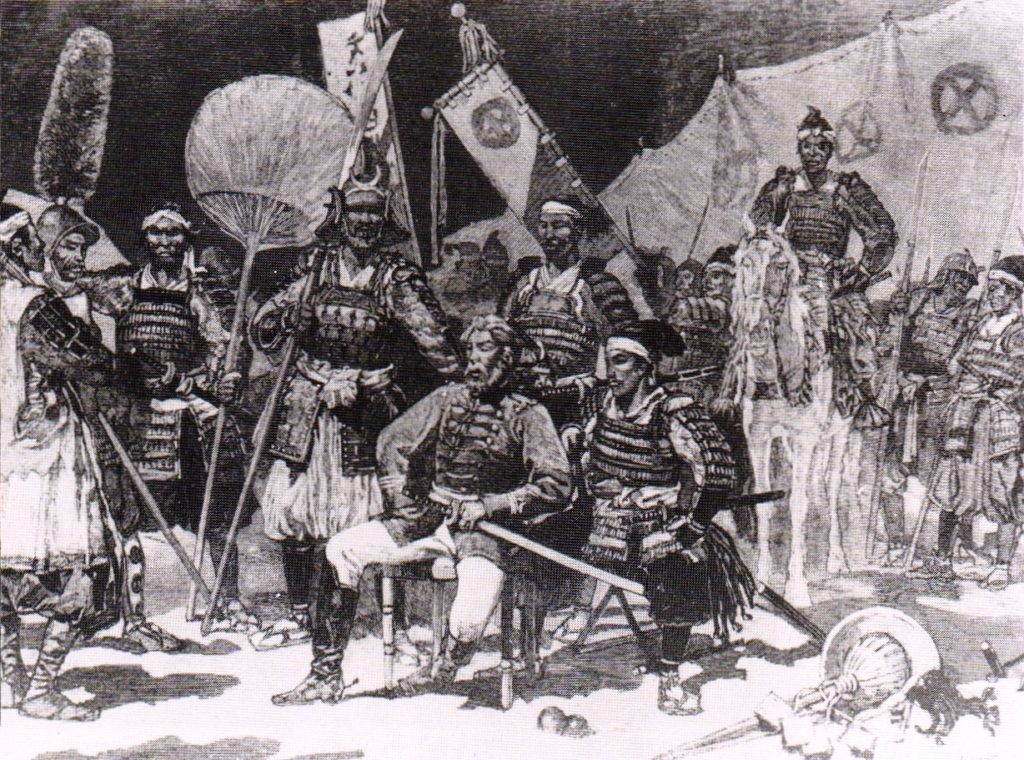
I began using Noh in my classroom after collaboration with my colleague, Matthew Dubroff, whose pedagogical approaches appear in the previous article, “Cutting-Edge Samurai Theater.” As the resident Japan specialists on our campus, we developed a team-taught freshman honors seminar that paired theater studies and history to introduce students to premodern Japan and the liberal arts more generally. Although I admire the intense concentration, physical discipline, and vocal training of Noh performers, I have so far entrusted in-class demonstrations of these skills to Professor Dubroff, who regularly practices them with his troupe, Theater Nohgaku. Instead, my main contribution in our teamtaught course, as well as my solo seminars, has been to extract salient themes of samurai history from warrior plays.
 One of the most productive moments when our disciplines aligned in the team-taught course came with our treatment of one of Japan’s most famous civil wars, the Genpei (Minamoto-Taira) War of 1180–1185, where rivals from the two largest warrior lineages struggled (sometimes among themselves) for control over the imperial court and authority to enforce security in the provinces. First, we examined translated documents and key events, such as Taira no Kiyomori’s seizure of power in 1160, the ensuing Minamoto (Genji)-Taira (Heike) conflict, Minamoto no Yoritomo’s assumption of military power as shogun in 1192, and then the shogunate’s first legal code, the Jōei Code of 1232.3 Following the document analyses and a survey of the conflict, we read chapter 9 of Helen Craig McCullough’s translation of The Tale of the Heike in her Genji and Heike.4 This chapter of the great warrior epic details events surrounding the Battle of Ichinotani (March 1184), as recounted by biwa hōshi (blind, lute-playing monk storytellers). We chose this particular portion of the epic for two reasons. First, and as Segal also points out in his article, this part of the epic is an effective way of teaching students to approach sources with a healthy dose of skepticism. Although The Tale of the Heike remains our most famous account of samurai conduct during the war, it only attained written form after nearly two centuries of embellishment, and it aggrandized individual warrior feats to placate their restless spirits. Our second reason was that the chapter contains the original scene on which Zeami’s Noh play Atsumori is based, when seasoned warrior Kumagai no Jirō Naozane from rustic Musashi Province faces, and then beheads, teenage Prince Taira no Atsumori from refined Kyoto.
One of the most productive moments when our disciplines aligned in the team-taught course came with our treatment of one of Japan’s most famous civil wars, the Genpei (Minamoto-Taira) War of 1180–1185, where rivals from the two largest warrior lineages struggled (sometimes among themselves) for control over the imperial court and authority to enforce security in the provinces. First, we examined translated documents and key events, such as Taira no Kiyomori’s seizure of power in 1160, the ensuing Minamoto (Genji)-Taira (Heike) conflict, Minamoto no Yoritomo’s assumption of military power as shogun in 1192, and then the shogunate’s first legal code, the Jōei Code of 1232.3 Following the document analyses and a survey of the conflict, we read chapter 9 of Helen Craig McCullough’s translation of The Tale of the Heike in her Genji and Heike.4 This chapter of the great warrior epic details events surrounding the Battle of Ichinotani (March 1184), as recounted by biwa hōshi (blind, lute-playing monk storytellers). We chose this particular portion of the epic for two reasons. First, and as Segal also points out in his article, this part of the epic is an effective way of teaching students to approach sources with a healthy dose of skepticism. Although The Tale of the Heike remains our most famous account of samurai conduct during the war, it only attained written form after nearly two centuries of embellishment, and it aggrandized individual warrior feats to placate their restless spirits. Our second reason was that the chapter contains the original scene on which Zeami’s Noh play Atsumori is based, when seasoned warrior Kumagai no Jirō Naozane from rustic Musashi Province faces, and then beheads, teenage Prince Taira no Atsumori from refined Kyoto.

After reading the selections from The Tale of the Heike, we then turned to Noh theater. Professor Dubroff has already summarized the plot of Atsumori, but the play vividly illustrates two key themes I underscored and continue to underscore whenever I teach samurai history. The first is that however mythologized they are as dutiful men of honor, samurai during this turbulent era in Japanese history engaged in killing and brutal violence, and they had to come to terms with the consequences of their actions. Promotion during wartime entailed displaying severed heads of prestigious opponents to superiors, and they faced pressures on the battlefield to present such “prizes” as measures of their military valor. As the fictionalized Kumagai realizes in The Tale of the Heike, if he does not perform the deed, many others would be willing:
‘I’d like to spare you . . . but there are Genji warriors everywhere. You can’t possibly escape. It will be better if I’m the one to kill you, because I’ll offer prayers for you.5‘ He instantly feels remorse for his actions, though, and curses his lot in life: No life is as miserable as a warrior’s. It’s only because I was born into a military house that I’ve had this terrible experience. What a cruel thing I’ve done!6
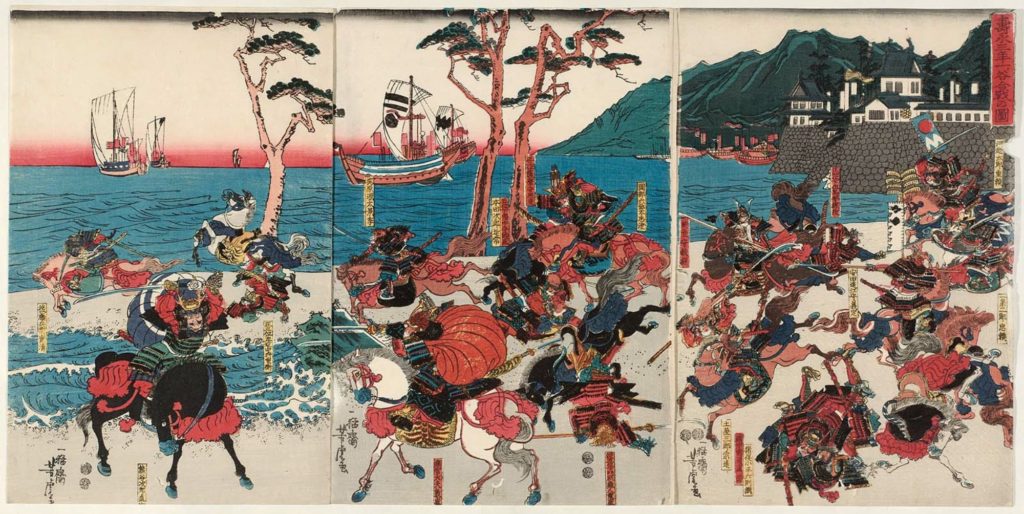
As Zeami continues the legend in Atsumori, Kumagai acknowledges that his violent career transgressed Buddhist proscriptions against killing. He has taken the tonsure, adopted the name Renshō, and prayed for the restless spirit of Atsumori.7 Renshō’s piety and penance over his deed motivate him to return to Ichinotani, and by the concluding chorus of the play, he placates the ghost of Atsumori in a climactic confrontation:
“You are my foe!” Atsumori shouts, lifting his sword to strike; but Kumagai with kindness has repaid old enmity, calling the Name to give the spirit peace. They at last shall be reborn together upon one lotus throne in paradise.
Renshō, you were no enemy of mine . . .8
The real Kumagai did not likely kill Atsumori, nor did he become a monk until some twenty years after the Genpei War over an unrelated dispute. Yet the fictionalized account of his career engaged samurai, and eventually commoner, audiences. Atsumori’s theme of an aged warrior wrestling with his violent past inspired derivative popular fiction, Noh plays by later playwrights, and kabuki and bunraku plays for four more centuries.9
The other theme from the team-taught course that I continue to emphasize with my students is the centrality of place in warrior Noh plays such as Atsumori. A majority of students in my classroom hail from Virginia, a state replete with “hallowed ground” from the American Revolution and the American Civil War.
Hampden-Sydney lies near the path of Robert E. Lee’s retreat at the end of the Civil War, and Appomattox Court House is only a thirty-minute drive from campus. Therefore, students are familiar with how locations can hold deep historic significance and evoke emotional responses. They are often inclined to view Lee, Stonewall Jackson, and other Confederate generals as tragic heroes—not unlike how tragic figures such as Atsumori, or Saigō Takamori of The Last Samurai fame, are revered in Japan—and they often link such figures to specific sites.10 Thus, the yūgen-filled sense of place in Atsumori lends itself well to class discussions about war legends and geography. Both Renshō and the ghost of Atsumori frequently make reference to the built and natural environments surrounding them, such as the town of Suma, Awaji Island, and the shoreline where their clash took place. Atsumori, along with a backing chorus, deftly interweaves such references with bitter memory:
So we stayed on, hard by Suma shore, while winds swept down upon us off the hills. The fields were bitterly cold. At the sea’s edge our ships huddled close, while day and night the plovers cried, and our own poor sleeves wilted in the spray that drenched the beach. Together in the seafolk’s huts we slept, till we ourselves joined these villagers, bent to their life like the wind-bent pines. The evening smoke rose from our cooking fires while we sat about on heaps of sticks piled upon the beach, and thought and thought of how we were at Suma, in the wilds, and we ourselves belonged to Suma now, even as we wept for all our clan.11
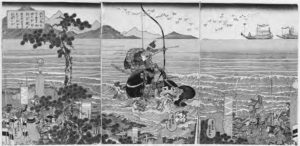
Atsumori narrates a tale of bone-chilling winds, pounding Inland Sea breakers, and a fallen warrior house in retreat after holding power in Kyoto for more than two decades. As with popular retellings of the Appomattox Campaign, the Taira warriors’ harsh natural surroundings reinforce the bitterness of their impending defeat.
Yashima is another work about the Genpei War, most likely by Zeami, that I have used since collaborating with Professor Dubroff to illustrate both the karmic consequences of a warrior’s life and significance of place. The play, based on a later chapter of The Tale of the Heike, follows a monk on pilgrimage in Shikoku, who nears the site of the Battle of Yashima, a March 1185 clash near a steep, flat-topped volcanic peninsula jutting out from the present-day city of Takamatsu.12 The monk encounters an old man there who is baking sea salt, and he asks if he and his fellow travelers could stay in his dilapidated hut. The old man at first refuses, but then agrees and mysteriously adds that he misses life in Kyoto. The old man then vividly recounts events from the Battle of Yashima and in so doing implies he is actually the ghost of Minamoto no Yoshitsune, the victor in the battle. After vanishing, the old man reappears as Yoshitsune in full battle armor and recounts his feats of bravery. He then laments he has been reborn in the realm of the Ashuras (Asuras), the wrathful deities of Buddhist cosmology, where he must eternally fight wars as penance for his life of violence:
The fallen flower returns not to the bough; the shattered mirror never more will shine. And yet, enraged by wrongful clinging back I come once more where demon souls, of their own will, torment their flesh: to the Ashura field of carnage sweeps an angry wave, hardly shallow, karma of such power! . . . I am Yoshitsune’s phantom. Wrongful clinging, brought on by fury, has me roaming, still, the waves of the western ocean. I have foundered in the sea of birth and death.13
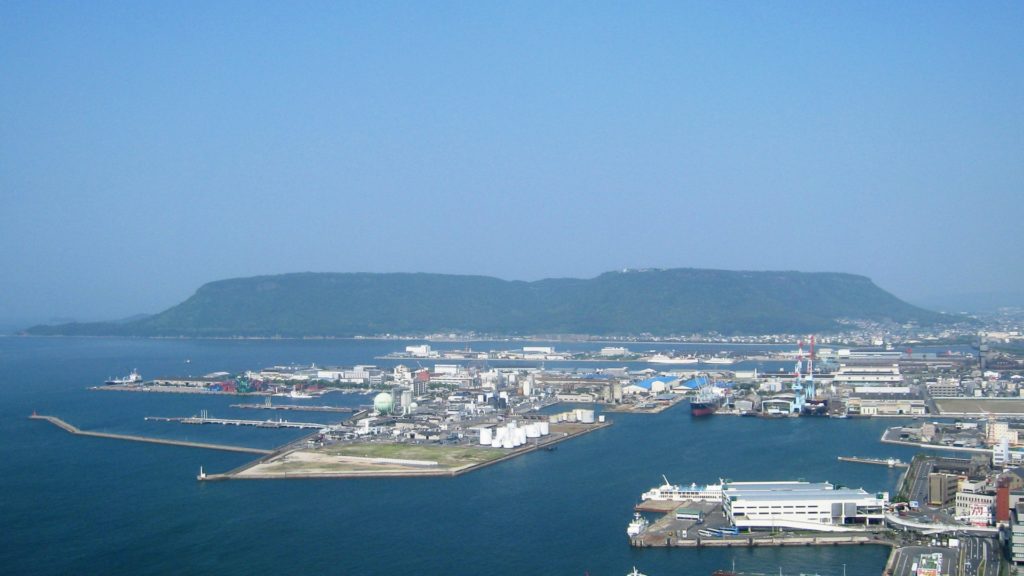
As Royall Tyler notes, in spite of Yoshitsune’s foolhardy and legendary successes versus the Taira, his ghost suggests “that final victory or defeat elude the warrior forever.”14 Yashima’s location also features centrally, and it draws attention to Yoshitsune’s fate even more than the Suma shoreline does with Renshō and Atsumori. Zeami parallels the basalt shoreside cliffs of Yashima with the Ashura realm in Buddhist cosmology, a transmigratory realm at the foot of the sacred Mount Sumeru that is partially submerged in the sea.1
Online images of Yashima’s distinctive appearance abound, and they have given my students an even better understanding of the importance of Zeami’s chosen setting.
Although I have only briefly examined two warrior plays and two themes from samurai history in this short essay, these examples should further illustrate how Noh theater offers a compelling means of interpreting warrior society in premodern Japan. As the essays by Matthew Dubroff and Tim Cooper demonstrate, Noh is accessible to undergraduate and secondary school students. The written translated plays are digestible in size, follow a recognizable jo-hakyū plot structure, and lend themselves well to playwriting assignments. Workshops emphasizing stage movements and vocals offer students special insights into the physical discipline and performativity that was part and parcel of samurai status. To these points, I would add that analysis of Noh plays nicely complements nonfictional primary accounts of premodern samurai life. By injecting yūgen into presentations and discussions of samurai history, students will gain an appreciation for the haunting, darkly mysterious aspects of warrior life.
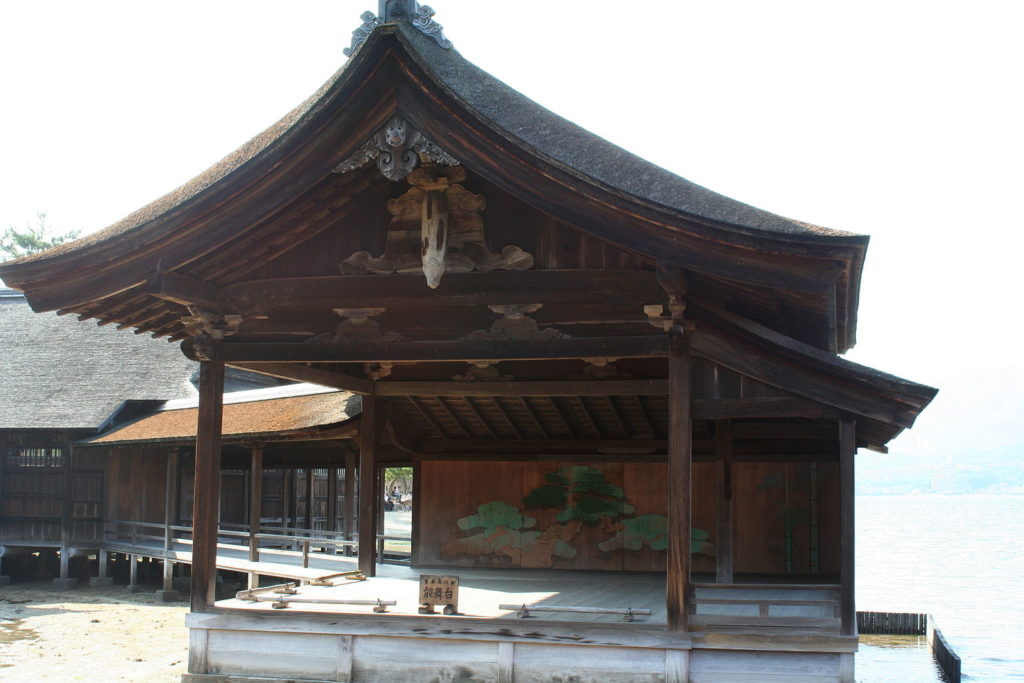
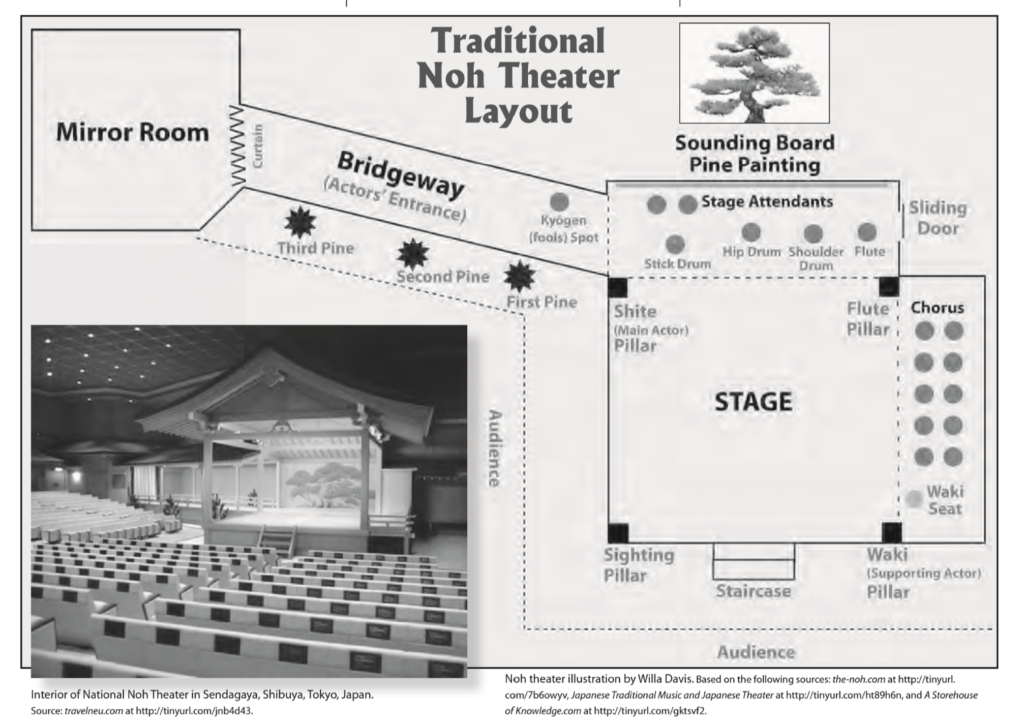
NOTES
1. Ethan Segal, “Can Samurai Teach Critical Thinking? Primary Sources in the Classroom,” Education About Asia 15, no. 3 (2010): 5–8.
2. Warrior plays (shura-mono) constitute the second category of Noh. The other categories are god (waki-Noh), woman (kazura-mono), fourth-category (yonbanme-mono), and concluding (kiri-Noh).
3. Useful translated documents from this period appear in Sources of Japanese Tradition, Vol. 1, 2nd ed., ed. Wm. Theodore de Bary, et. al. (New York: Columbia University Press, 2002).
4. See Helen Craig McCullough, ed. and trans., Genji and Heike: Selections from The Tale of Genji and The Tale of the Heike (Stanford: Stanford University Press, 1994). McCullough’s introduction, which I regularly assign to undergraduates, offers an accessible overview of the work and its evolution over time.
5. McCullough, 395.
6. Ibid.
7. Many other famous samurai tales rehearse this theme of samurai receiving the tonsure before their death. English translations are available in Hiroaki Satō, Legends of the Samurai (Woodstock: Overlook Press, 1995).
8. Zeami, Atsumori in Japanese Nō Dramas, ed. and trans. Royall Tyler (New York: Penguin, 1992), 47–48. 9. Tyler, 37–38.
10. On the mythologizing of tragic heroes in Japan, see Ivan Morris, The Nobility of Failure: Tragic Heroes in the History of Japan (New York: The Noonday Press, 1975).
11. Tyler, 46–47.
12. Chapter 11 of the McCullough translation in Genji & Heike.
13. Tyler, 341–342.
14. Tyler, 331.
15. Tyler, 330.

